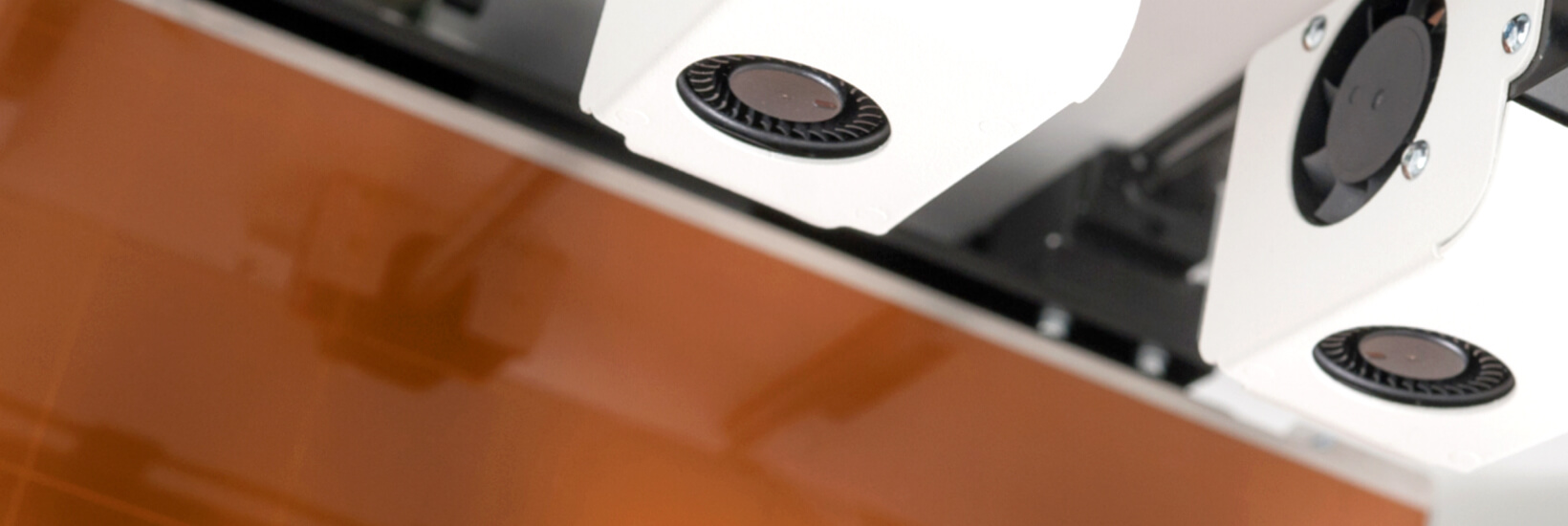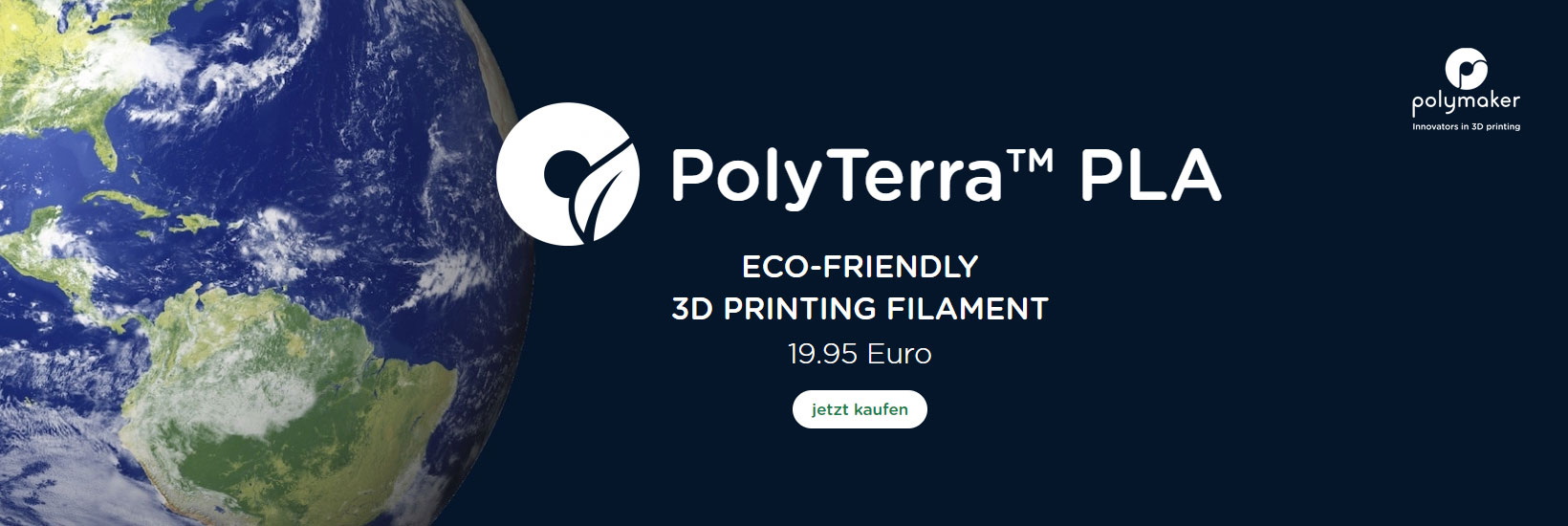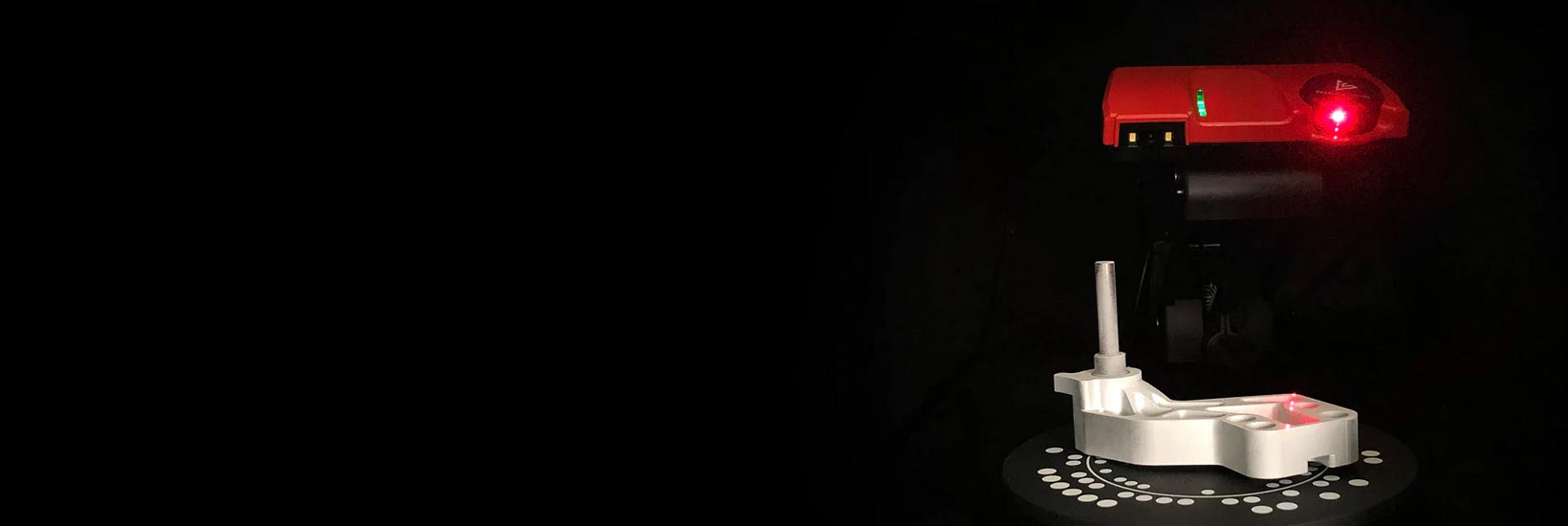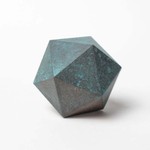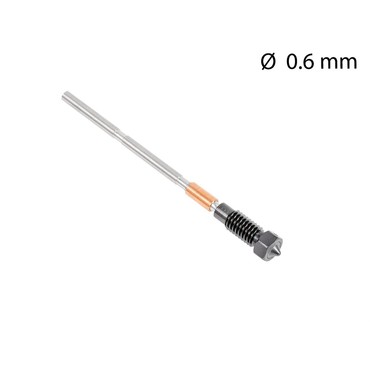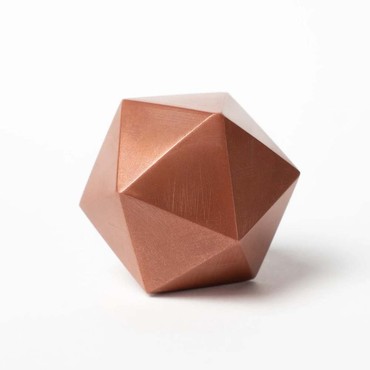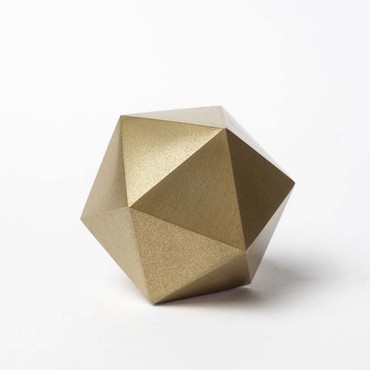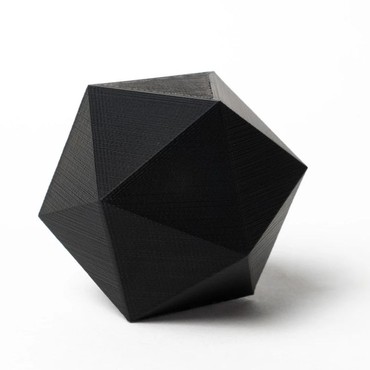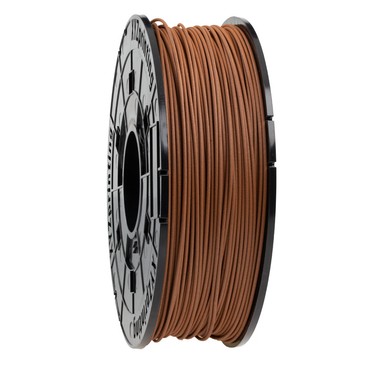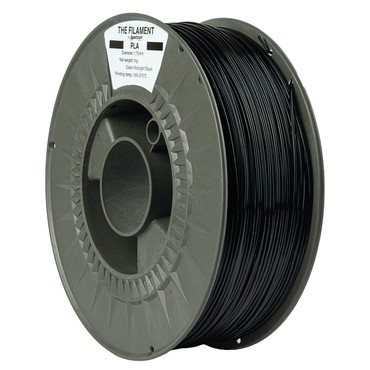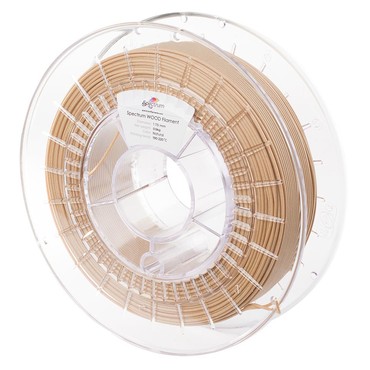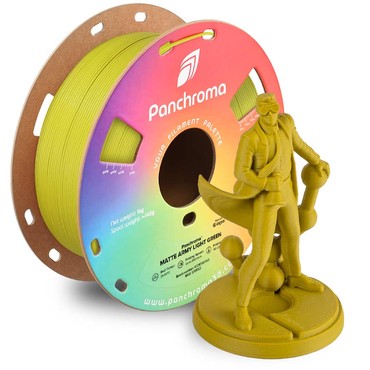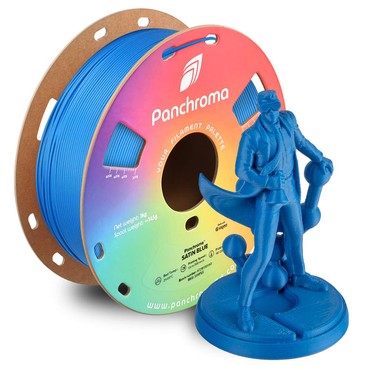Copper-filled Metal Composite HTPLA 1.75mm 50g
Mixture of PLA and bronze - for heavy, metallic looking 3D objects, polishable
50g or 500g on spool / in 1.75mm and 2.85mm
Brick or cast bronze? Brush, polish or patina and enjoy!
Using real bronze powder, we've created a high-quality heat-treatable metal PLA filament for 3D printing that performs just like real metal! Our bronze composite filament is as versatile as it is beautiful. It prints like plastic, but performs like real metal for beautiful, durable parts on most standard 3D printers.
post processing
Whether you want your prints polished with the same bright mirror finish of shiny bronze coins, or a naturally rustic finish with an acquired patina reminiscent of an aged bronze sculpture, the possibilities of this special metal PLA filament are endless. With so many finishing options, the sky's the limit!
Here are just a few common metal composite filament finishing techniques you may want to try:
- Heat treat your HTPLA print to survive harsher environments like the hot sun or a warm polishing wheel (more details below)
- Wire brush to expose metal for future oxidation or a bright satin finish
- Rock tumble with steel shot for a darker but smooth, shiny look
- Paint a part (e.g. black) to fill in the recesses with a contrasting color
- Polish with a rotary tool, cotton polish and polishing compound for a bright, mirror-polished finish on high spots (darkens low spots)
- Polish with paper for a clean, smooth and bright finish with less darkening
- Patina (oxidize) exposed metal naturally or accelerate with a 50/50 vinegar/hydrogen peroxide mixture saturated with salt. Place in a sealed plastic bag to retain moisture. Heat further accelerates the reaction.
Try these techniques separately or combine them! Change the order or try something new. If you discover a new technique, make something beautiful or discover something unexpected, share it! Once you get that perfect WOW finish, be sure to keep it with a clear coat or a water-based, food-safe and dishwasher-safe brush like Modge Podge. Practice finishing on a test piece like Protognome (download here).
Areas of application
The prior heat treatment to strengthen HTPLA helps the parts hold the shape until almost melted (175°C). Protect your investment in warm environments or expand application limits by investigating the thermal conductivity of copper. There is not enough copper to be electrically conductive, sintered or plated, but there is a noticeable difference in weight and heat transfer.
Some application ideas are:
- Artificial brick or stone
- Devices or hardware
- Buttons or keys
- Heat sinks or heat exchangers
- Fine art & sculpture
- Emblems, signage or trophies
- Jewelry such as pendants or bracelets
- Cosplay, game pieces or figurines
Material properties
- Base
HTPLA - Heat Treatable PLA - additive
Real bronze powder - Particle size
less than 250 microns (0,25 mm) - Odor
low or no - density
Ca. 2,30 g / cm³ - Length (500 g)
97 m (1,75 mm) und 36 m (2,85 mm) - Heat treatment
110 ° C (225 ° F) for 10 minutes or as needed for the desired result - Total stiffness loss (before heat treatment)
50-60 ° C (Tg) - Total loss of stiffness (after heat treatment)
150-175 ° C (Melt) - Dimensional change (before heat treatment)
0% X / Y / Z. - Dimensional change (after heat treatment)
1.5% shrinkage X/Y and 1% growth Z typical,
but please calculate and confirm for your specific print and process
Printer settings
- speed
10-20 mm/s 1st layer, 20-80 mm/s rest of the part - Nozzle setpoint
185-215 ° C (hottest on the 1st layer for best adhesion) - Nozzle Is
Maintain setpoint, reduce speed if less than - Nozzle type
Standard or wear-resistant for longer use - Nozzle diameter
0.6mm or more preferred, 0.4mm fine with a minimum of 0.25mm for experts - Layer thickness
0.15 to 0.20 mm recommended for a balance between quality, reliability and productivity - Bed temperature
Room-60C (over 60C can worsen the distortion) - Bed preparation
Your favorite
This material has been flow optimized and absorbs less moisture than standard PLAs. However, depending on hardware and software settings, it is sometimes more difficult to print composites. The main challenge is maintaining bulk flow (larger nozzle + high speed) and in a single direction (minimal retraction) to avoid heat soak.
